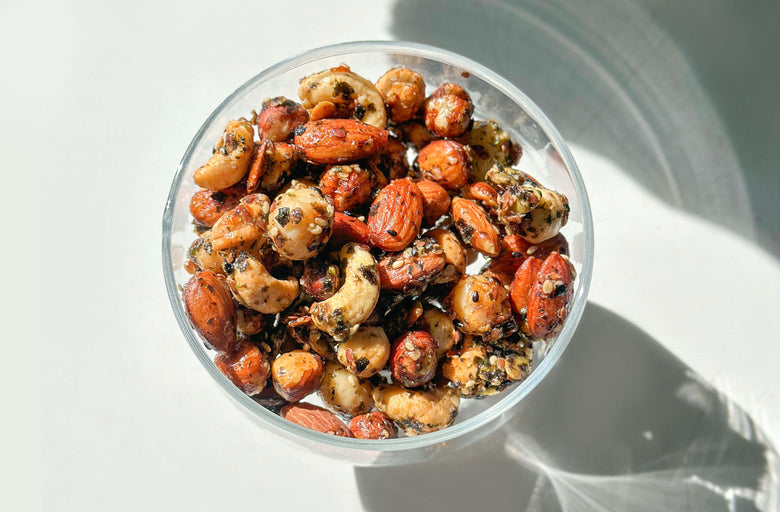You know that one friend every girl has? The one who can predict her period within an hour of its arrival? The one who operates on such a consistent menstrual schedule, you’d swear her uterus were programmed to operate at maximum efficiency?
Well, if you’ve caught yourself quietly coveting her clockwork body and cursing your own unpredictable cycle, it’s time to change your attitude and take control of your flow. One of the most common questions I’m asked by women is: “How do I know where I am in my cycle?” If you’re not experiencing clockwork periods every 26-32 days, and if you’ve picked up my book or found my site then there’s a good chance that you are not experiencing this, then figuring out whether you’re in your follicular or luteal phase can seem like a conundrum.
You’re not alone and I’m here to tell you that you can untangle your period problems, whether you have PCOS or some random irregularities. The key is to sync your diet with your cycle. And it’s simpler than it sounds. The nitty gritty details are in my book, but a quick snapshot of which foods are best for which phase of your flow can be found here.
To help you on your way to better and regular periods, no PMS, no cramps, high energy, suped up sex drive, and healed hormonal health issues, it’s important to understand some of the most common cycle scenarios so you can get your body back on track ASAP.
The 3 Most Common Types of Irregular Menstrual Cycle
Period Delay Type 1 – Too long
Either you’re not making enough hormones to ovulate and you’re experiencing a perpetual follicular phase, or you are not making enough progesterone and staying in the luteal phase post-ovulation for far too long.
How to cycle sync – Figure out which issue you are dealing with first. Thankfully it’s not too hard to do. The most scientifically accurate way is to take your basal body temperature every morning when you wake up. When you ovulate, your temperature will shift and indicate your body is entering the luteal phase. This can also help you to predict when you will see your period. You could do this with a regular thermometer and read “Taking Charge of Your Fertility” by Toni Weshler to understand how to interpret your temperature data to know which phase you are in, or you can use any one of the new fertility monitors and apps, which do all the interpreting and analyzing for you and let you know if and when you’ve ovulated. You can also monitor the other signs your body will provide – if you are experiencing a long follicular phase then you will have constant vaginal dryness and if you’re in your luteal phase for weeks you will be experiencing bad PMS symptoms like mood swings and bloating.
Monitor your cycle for at least three months to figure out the issue you are dealing with. One cycle can easily be thrown off by stress, antibiotics, illness, too much alcohol, strenuous workouts, and more. But three months of monitoring will show a pattern you can work with. Start with the phase that you are experiencing the longest – follicular or luteal – and eat the foods listed for that phase and follow the plan for that part of your cycle. Then move forward through the protocol every seven days – so seven days luteal/follicular, seven days ovulatory/menstrual and so on. This will support your body and help you to balance your hormones, so that you can then progress to the next phase, and the next. Your body will be prompted to follow suit.
Period Delay Type 2 – Too short
A short cycle (we’re talking less than 26 days) is a sign that your thyroid is under-performing. Usually, this means you have a very short luteal phase.
How to cycle sync – Figure out where you are in your cycle using the methods mentioned above. Then focus on the luteal phase foods. Eating more of these will help you support your thyroid and progesterone levels and make your luteal phase longer and more regular (ideally it should be at least 10 days long and at best, 14 days long).
Period Delay Type 3 – No period for months Not seeing your period for months on end suggests you are in a very long follicular phase most of the time. Your body is only ovulating very occasionally, if at all.
How to cycle sync – Start with the foods in the follicular phase and progress every seven days to the next phase in the cycle regardless of what your body appears to be doing. For many, many women I’ve worked with, this is enough to kick-start their reproductive hormonal system and they see their period return quite rapidly. We have testimony after testimony from those women who are Flo Living graduates who have gotten their periods after months, even years of it going M.I.A (see here and here). Always remember, that once you have the right information about how your body really works, you can start making health choices that finally start to work for you! You can do this – the science of your body is on your side!






